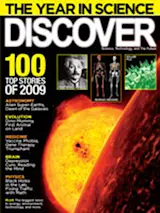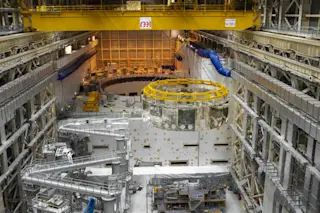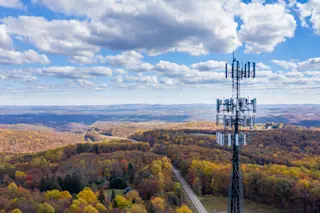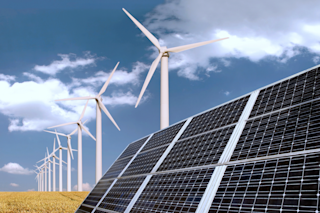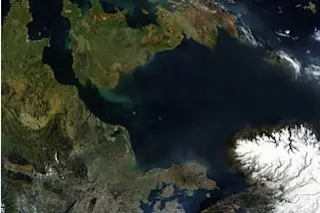Last year the car battery turned glamorous: Hybrid hysteria invigorated the faltering auto industry, and General Motors touted its upcoming plug-in hybrid, the Chevy Volt, at every opportunity. For decades researchers have labored to make batteries smaller, cheaper, and more efficient. At last some of those projects are yielding encouraging results.
The latest electric vehicles use lithium-ion batteries, in which lithium ions move from anode to cathode (negative to positive), transforming chemical energy into electric current. These batteries are smaller, lighter, and more robust than their nickel-based or lead-acid predecessors. IBM announced in June that it is pursuing a new kind of lithium battery that uses the surrounding air as a cathode, making it even lighter and more compact than existing designs.
Traditional lead-acid batteries (like the one that starts your car) produce energy for as little as one-tenth the cost of lithium batteries, but they wear out more quickly and are heavy. Blended battery packs, pioneered this year by Indy Power Systems of Noblesville, Indiana, strike a balance. Software switches between lead-acid and lithium-ion batteries, offering a transitional technology until lithium energy storage gets cheaper.
Engineers are also finding ways to shorten recharging times. In March an MIT team unveiled technology that could theoretically charge an electric car in five minutes rather than the eight hours that is typical today. MIT’s battery contains a vast number of microscopic particles that have a lithium center and a glassy phosphate coating. The coating allows lithium ions, which travel quickly in the core of the battery but slowly at the surface, to maintain their speed and to be shed quickly. “The coating allows the lithium to get to the right place on the phosphate very fast,” says Gerbrand Ceder of the MIT team. “We fixed the bottleneck at the surface.” One company has already licensed the technology.


